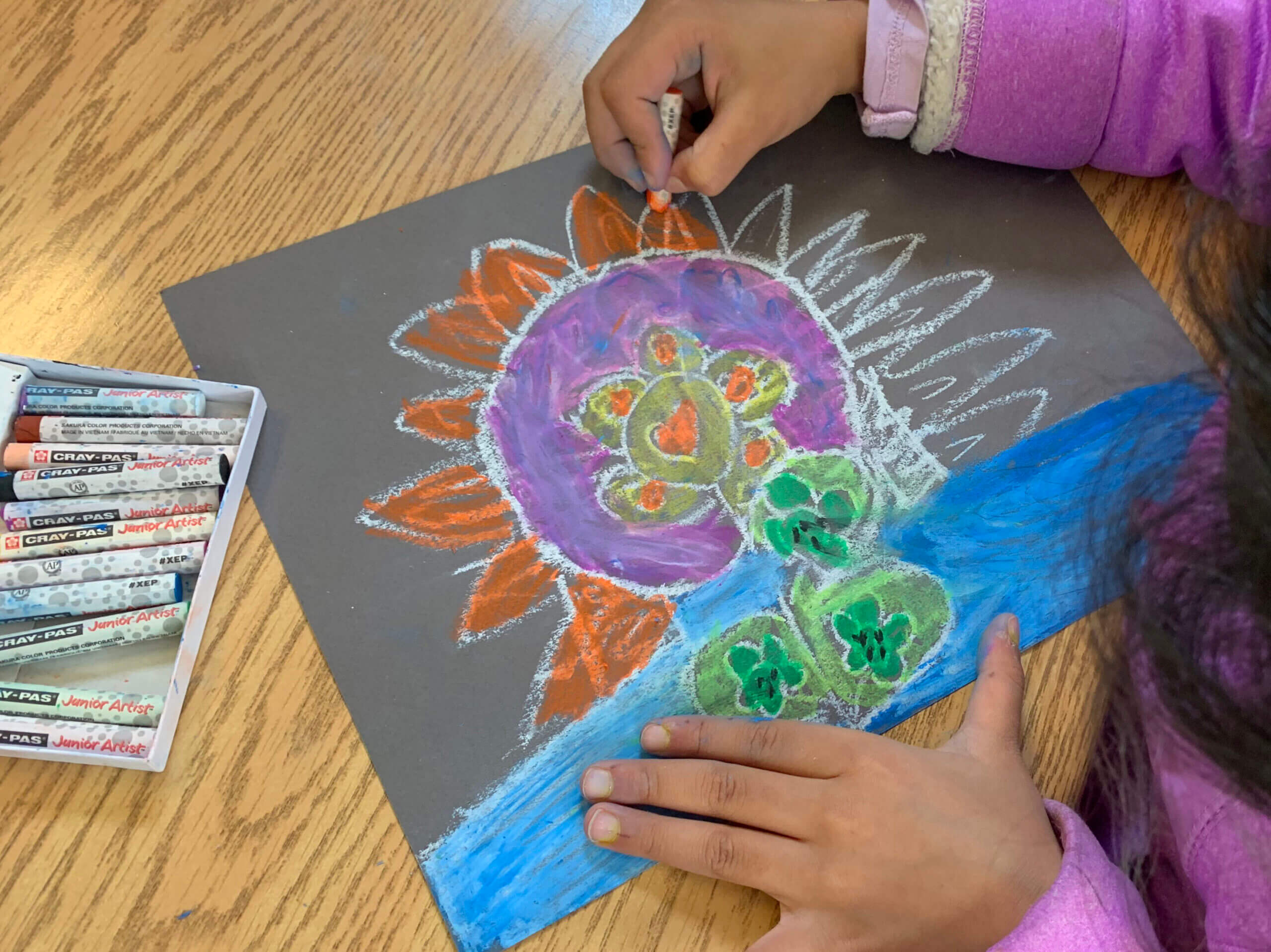Our inquiry-based approach helps students of all ages learn to use the artistic process—focusing on exploration, discovery, and skill building across a variety of art media.
Founded in 1977 to develop and nurture visual arts experiences for New York City youth, this website is a place for us to share our resources, lesson plans, and learnings beyond New York.
Our age-appropriate and standards-aligned lessons, activities, and other resources are designed for the ease of educators and the delight of their students.
Our teaching philosophy follows the standards outlined in:
- New York City Department of Education Blueprint for Teaching and Learning in Visual Arts
- New York State Learning Standards for the Visual Arts.
The Three-Part Lesson
Our teaching model includes three components: engagement, work time, and reflection.
Engagement
Each lesson begins with engagement, a time to actively engage students by modeling the creative process. During engagement, artist instructors introduce the art materials and tools students will work with through open-ended inquiry. As the artist instructor models the art making process, they speak their process out loud, pose questions, elicit students’ ideas, observations and questions, and often invite students to model the process for each other.
Work Time
The next part of each lesson is work time. During this time, students engage in the art making process independently, exploring materials and techniques, and applying the concepts learned during engagement. During this time, artist Instructors provide individual support, posing questions that support exploration and discovery, celebrating and sharing students’ discoveries, and helping them problem solve.
Reflection
Finally, students reflect on their process individually and as a group. They look closely at their own work and that of their classmates, articulate their process and ideas, and share the insights, discoveries, challenges, and solutions gained during work time. Reflection is a key component of all Studio lessons. By giving language to their experiences, students deepen their understanding of both their own art making process and the diverse approaches of their classmates.
Importance of Exploration
Exploration is a key component of our teaching practice. Students explore art making tools and materials in order to learn their qualities, what they can do, and how they can manipulate them to create different expressive effects. Students explore artistic ideas and concepts through engaging in close looking and inquiry with works of art.
Student-Centered Approach
Our approach is student-centered, encouraging student choice and the development of a unique artistic voice. Through rich art making experiences, students gain the skills and techniques they need in order to make meaning and express themselves in the language of art. Exploration, skill building, and expression are valued and nurtured through our teaching method.
About Grade-Bands
Our units are differentiated by grade bands—K-2, 3-5, 6-8, and 9-12, with 3K and Pre-K as their own categories. These grade bands reflect children’s developmental stages in art making. As students advance through each grade band, they develop their skills and confidence in a range of art media, develop their imaginative capacities, and find their artistic voice.
Studio in a School was a very fun, creative and engaging program. Children got to expand their vocabulary, creativity, and explore art materials.
– classroom teacher, Early Learning Center
LEARN & EXPERIENCE
Pre-K through 12 Student Lessons
Explore scaffolded lessons for students of all ages. Download units and full lesson plans—search by media, grade, and much more!

